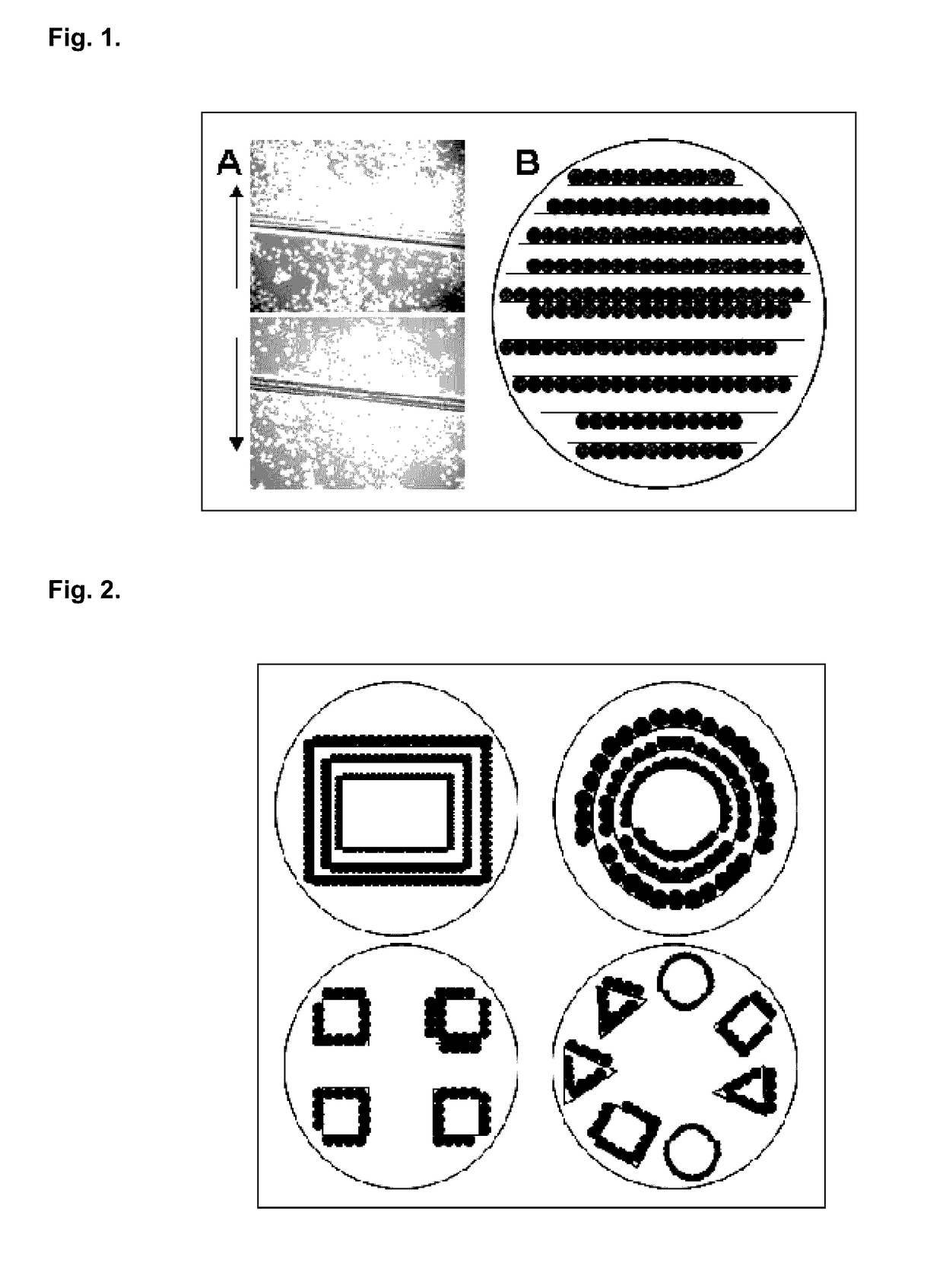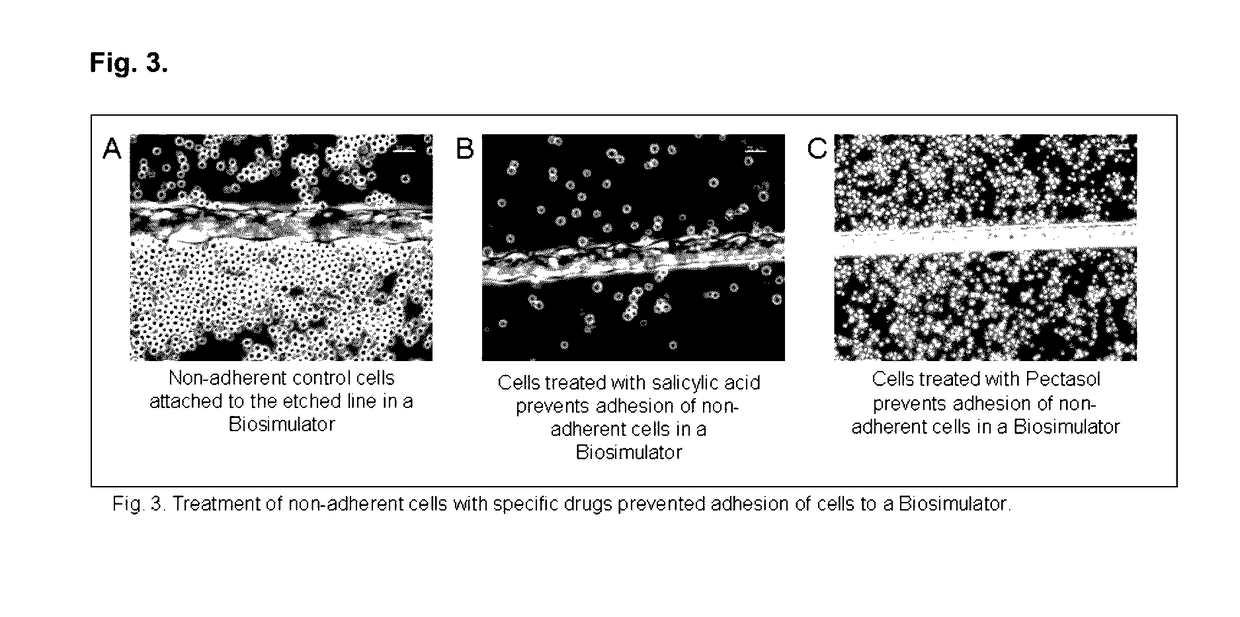In vitro biosimulator to induce pattern formation in non-adherent cells
a non-adherent cell, in vitro technology, applied in the field of cell biology, immunology, pathology, biotechnology, etc., can solve the problem of limiting the use of non-adherent cells in pharmacological studies
- Summary
- Abstract
- Description
- Claims
- Application Information
AI Technical Summary
Benefits of technology
Problems solved by technology
Method used
Image
Examples
Embodiment Construction
[0018]Conventional methods of cell culture include seeding of cells on Petri dishes. Cell culture treated dishes are used to grow adherent cells, where they are attached to the bottom of the Petri dish, whereas non-adherent cells do not attach to the dish. Non-adherent cells (including B cells, T cells, hybridomas) are suspended in the medium (Schindler, 1969).
[0019]Most of the bacterial culture uses agar as a solid medium. The bacterial cells growing on the semi-solid agar form distinct colonies, which are later used for several studies. However, only less than 1.0% of the bacteria are culturable. The ability to culture the majority of bacteria has impeded studies on new natural products and also has prevented factors that can contribute to both ecological balance and host health (Stewart, 2012).
[0020]In vitro cell culture is the first step to test the efficacy of pharmacological drugs. There are no existing technologies for the culture of non-adherent cells thereby impeding studie...
PUM
 Login to View More
Login to View More Abstract
Description
Claims
Application Information
 Login to View More
Login to View More - R&D
- Intellectual Property
- Life Sciences
- Materials
- Tech Scout
- Unparalleled Data Quality
- Higher Quality Content
- 60% Fewer Hallucinations
Browse by: Latest US Patents, China's latest patents, Technical Efficacy Thesaurus, Application Domain, Technology Topic, Popular Technical Reports.
© 2025 PatSnap. All rights reserved.Legal|Privacy policy|Modern Slavery Act Transparency Statement|Sitemap|About US| Contact US: help@patsnap.com


